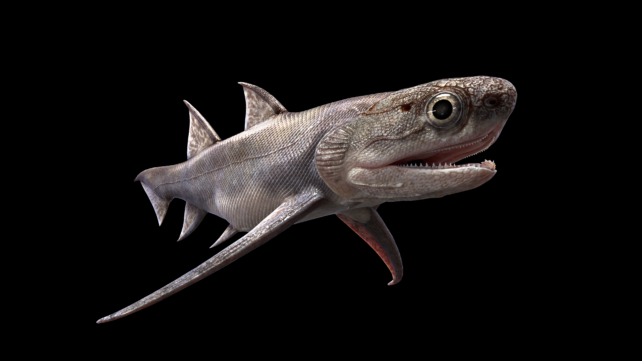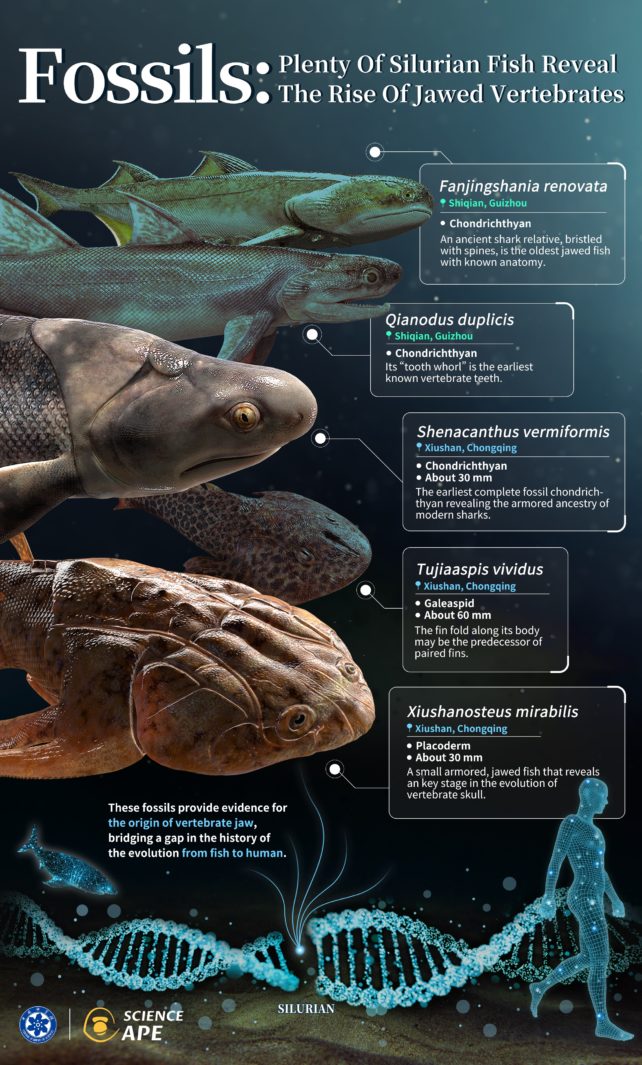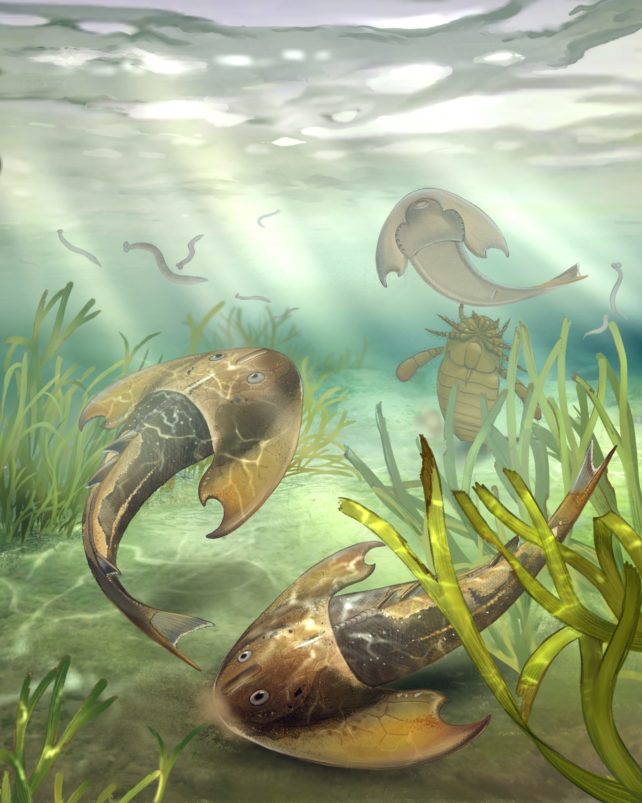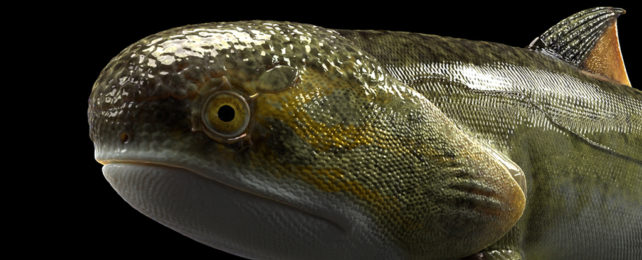Road excavations in China's Guizhou Province have unearthed a trove of ancient fish fossils. As a part of rock layers known as the Rongxi Formation, the new fossil bed is filled with never-before-seen species that push back the dates of our first jawed animal ancestors by about 15 million years.
"Until this point, we've picked up hints from fossil scales that the evolution of jawed fish occurred much earlier in the fossil record, but have not uncovered anything definite in the form of fossil teeth or fin spines," says University of Birmingham paleobiologist Ivan Sansom.
Previously, the earliest known jawed animal was a fish that lived some 423 million years ago. A collection of about 20 teeth sifted from the rock bed could be up to 439 million years old. Left by an ancient fish species called Qianodus duplicis, they give us our earliest look at the origins of our very own teeth and jaw.
The development of jaws was a pivotal innovation in the evolution of vertebrates, giving boned animals like ourselves the ability to eat a much larger variety of foods than our ancestors' filter-feeding mouths would allow. This helped early backboned animals move into new environments which continued to shape their anatomy, leading to the huge diversity of body shapes and different behaviors we see in vertebrates today.
Jaws are clearly one of the success stories of the animal kingdom. Little more than heavily modified fish gills, they can still be found in more than 99 percent of today's vertebrates.
Relatives of this newly identified toothy animal would give rise to two of the major groups of modern fish – chondrichthyans (sharks and rays) as well as osteichthyans which include almost everything else from seahorses and tuna to lungfish.
In time, descendents from this second group would give rise to tetrapods, which eventually deliver mammals like us.
"Qianodus provides us with the first tangible evidence for teeth, and by extension jaws, from this critical early period of vertebrate evolution," says Qujing Normal University paleontologist Qiang Li.
While researchers can guess at the kinds of features Qianodus might have had, there's only so much teeth can tell you about what an animal might have looked like.

Thousands of skeletal fragments were also retrieved from the Rongxi Formation. This time researchers could painstakingly piece them back together to reveal more of a body, one that belonged to an ancient shark ancestor they've named Fanjingshania renovata.
"This is the oldest jawed fish with known anatomy," explains vertebrate paleontologist Min Zhu from the Chinese Academy of Sciences. "The new data allowed us to place Fanjingshania in the phylogenetic tree of early vertebrates and gain much needed information about the evolutionary steps leading to the origin of important vertebrate adaptations such as jaws, sensory systems, and paired appendages."
Another shark ancestor Shenacanthus vermiformi and a more ancestral fish species Xiushanosteus mirabilis were also discovered, this time in a South China fossil bed dated to the same period called the Huixingshao Formation.

These discoveries better align the fish fossil record with molecular clock data derived from the genes of still living and extinct species, which suggest that jawed animals arose around 450 million years ago. The fish fossils provide tangible evidence that this important feature, which eventually led to frogs, dinosaurs and our own existence, was already well established during the Silurian period (around 444 to 420 million years ago).
"These are the first creatures that we would recognize today as fish-like, evolving from creatures often referred to as 'clams with tails', from earlier in the Ordovician period," says paleontologist Plamen Andreev from the University of Birmingham.
But even the jawless fish found at the road excavation sites in China revealed some more clues to our own evolution. The researchers also discovered a 436 million-year-old rock bearing a jawless galeaspid (helmet shield) fish. To Zhu and colleague's surprise, this prehistoric animal had paired fins.

Previously only fossilized heads of these Tujiaaspis vividus had ever been found, and it was thought they were finless.
These early fins don't require specialized muscular input, creating lift passively from forward movement, like a paper plane propelled through the air. This supports a long-debated hypothesis that a single pair of limbs arose in animals first that eventually separated into pectoral (arm) and pelvic (leg) fins over evolutionary time.
"Eventually, these primitive fins evolved musculature and skeletal support, which allowed our fishy ancestors to better steer their swimming and add propulsion," explains University of Bristol paleontologist Joseph Keating. "It is amazing to think that the evolutionary innovations seen in Tujiaaspis underpin locomotion in animals as diverse as birds, whales, bats and humans."
These incredible new discoveries help fill in some important waypoints during our prehistoric evolutionary journey from fish to humans.
The research on the oldest fish and shark jaws, early fins and oldest teeth were all published in Nature.
